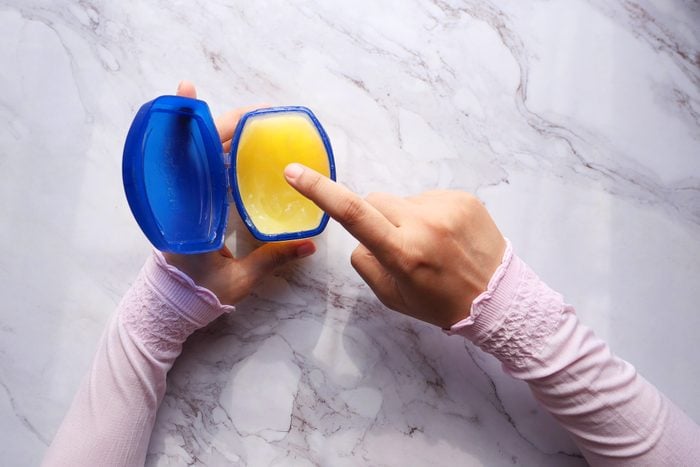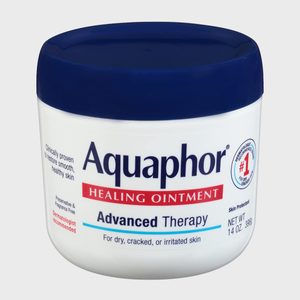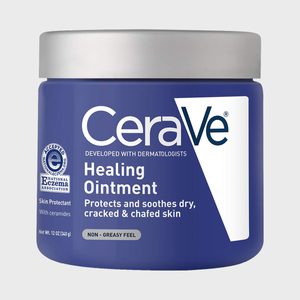What Is Slugging? I Tried the Viral TikTok Trend
Updated: Feb. 22, 2024

We had the experts weigh in on slugging—the trending (and dermatologist-approved) addition to your skin-care routine.
Our editors and experts handpick every product we feature. We may earn a commission from your purchases.
Beauty is not typically the first word that comes to mind when you hear the word slug. After all, slugs are these slimy, slow-moving creatures that can wreak havoc on your garden. So when I first heard of slugging as part of a beauty routine, my first thought was, Ew. My second thought? Winter is just around the corner and with it, dry skin. So it might be worth adding to my arsenal of moisturizers and eye creams for the season.
But first, full disclosure. In spite of its benefits, I was not necessarily excited to try slugging. I don’t like to feel things on my face. When it comes to my makeup and skin-care products, I don’t want to know that they’re there once I’ve applied them. So the idea of putting a thick occlusive on my face wasn’t the most appealing. Not only that, but I was worried about ruining my favorite silk pillowcase. Even still, I figured I could suck it up for a few nights if this would save my skin from dryness this winter.
As with all viral trends, there are, it seems, a hundred different takes on slugging. Rather than dive too far down a TikTok rabbit hole, I reached out to the experts in order to make sure I would get the most out of this experiment. I spoke to Rhonda Q. Klein, MD/MPH, FAAD, and Deanne Mraz Robinson, MD, FAAD, co-founders of Modern Dermatology in Westport, Connecticut. Dr Klein is also an Associate Clinical Professor of Dermatology at Yale New Haven Hospital and Bridgeport Hospital, and Dr. Robinson is an Assistant Clinical Professor of Dermatology at Yale New Haven Hospital. They covered all of the basics including the benefits, how-tos, and who should or shouldn’t partake in this beauty trend. If you’ve been curious about slugging and want to cure dry skin, read on for everything you need to know.
What is slugging?
Simply put, slugging is the final step in your nighttime skincare routine where you apply a petroleum-based occlusive over your skin to seal in the products while you sleep. Dr. Robinson explains, “the occlusive prevents transepidermal water loss, locking hydration and skin-care products applied underneath in for maximum benefit.” Additionally, she adds that it is excellent for supporting the skin’s natural lipid barrier, which binds cells together and helps to regulate hydration and keep irritants out.
And while many attribute this skin-care trend to the K-beauty world, using petroleum jelly to soothe dry skin is nothing new. As a matter of fact, I have a toddler who suffers from pretty bad eczema, especially in the winter months. Both her dermatologist and her pediatrician have recommended applying petroleum-based occlusives and good old Vaseline to her problem areas, including her face, to help combat flare-ups. That being said, don’t rely on an occlusive alone to moisturize your skin. Dr. Robinson points out that while the process is reparative and promotes overall skin healing, it will only lock in what you’ve applied underneath it.
All about slugging at home
As Dr. Robinson said, slugging locks in your skin-care products, but she advises you to be careful of what you’re locking in. She cautions that a retinoid may cause irritation and comedogenic ingredients may cause breakouts, so you’d be better off avoiding those products. So what should you lock in? According to Dr. Klein, hydrating products like a hyaluronic acid serum and a peptide/lipid-based moisturizer are best.
Since I already use a serum with hyaluronic acid along with a polypeptide moisturizer before bed, getting started was easy. All I had to do was wash my face and apply my products, minus my retinol cream, as usual. Then I applied a thin layer of Aquaphor on top.
Now, I had watched a handful of Tiktok videos, and it seems that the amount of occlusive people apply varies. I’ve seen videos where people go for the full, slimy, slug effect, and others where you can barely tell they’ve put it on. I used a small blueberry-sized dollop of Aquaphor, and that was enough to cover my entire face without leaving it uncomfortably greasy.
When should you start incorporating slugging into your nightly routine? According to Dr. Klein, slugging is most helpful during times when your skin is the driest and dehydrated. For me, that happens to be in the winter months when I turn the heat on. But if you’re prone to dry skin in general or live in a dry climate, she adds that it can be done year-round. And in terms of frequency, that also depends on your skin. If it’s dry, then Dr. Klein recommends slugging two or three times a week.
Final verdict on slugging
Much to my surprise, the Aquaphor didn’t feel as heavy on my face as I had expected. Nor did it ruin my pillowcase. In fact, the only thing I found slightly annoying was the fact that every stray hair stuck to my face. When I woke up in the mornings, most of the Aquaphor had come off my cheeks, but this wasn’t surprising given the fact that I’m a side sleeper and toss from side to side throughout the night. And even though my skin is not overly dry at the moment, I found that after I woke up, washed my face, and applied my morning skin-care routine, it felt noticeably softer. So is this something I will do again? You bet!
That being said, slugging is not for everyone. Dr. Robinson and Dr. Klein both advise against slugging if you have acne-prone skin or rosacea. And if you happen to visit your dermatologist for in-office laser and light-based treatments like PDT (Photodynamic Therapy), Dr. Klein advises patients to apply an occlusive with nothing underneath it following those treatments.
Where to buy the best products for slugging
When it comes to your slugging material of choice, Dr. Klein recommends a few different and affordable options, all of which can easily be found on Amazon or your local drugstore. Her picks include CeraVe Healing Ointment and Aquaphor, and, of course, plain old Vaseline.
Sources:
- Rhonda Q. Klein, MD/MPH, FAAD Co-founder, Modern Dermatology, Associate Clinical Professor of Dermatology at Yale New Haven Hospital and Bridgeport Hospital
- Deanne Mraz Robinson, MD, FAAD Co-founder, Modern Dermatology, Assistant Clinical Professor of Dermatology, Yale New Haven Hospital


